
Class Arachnidia (spiders, scorpions, ticks, mites), Order Acarina (ticks and mites), Trombidiformes (most mites)
Invertebrates Around Las Vegas, Wildlife Around Las Vegas
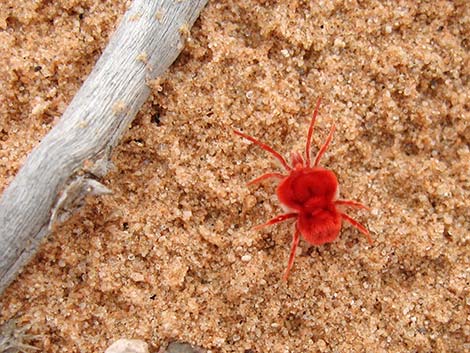 Dinothrombium adult on damp sand after rain |
Mites are curious creatures closely related to ticks, but fortunately, most do not bother humans. Velvet mites are harmless to humans. Mites in the family Trombidiidae are the large red velvet mites found in the soil, soil litter, and other terrestrial habitats. These mites have a complex life cycle. The several instars of larvae generally are parasitic on insects such as grasshoppers, beetles, and aphids, but adults are free-living predators of small arthropods and their eggs. Because of their feeding habits, velvet mites have been considered as possible biological control agents for invertebrate pest species. The velvet mites found in the deserts around Las Vegas likely are in the genus Dinothrombium because members of the genus are found in sandy desert areas around the world (including South Africa: see photo below). Similar mites found in organic soils are in the genus Thrombium. |
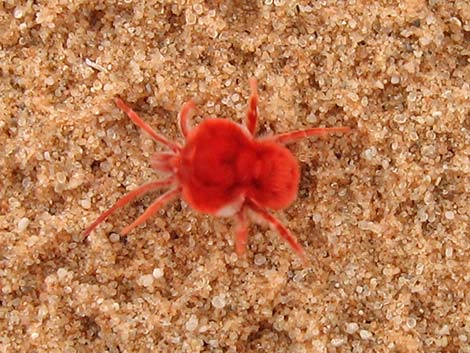 |
On desert soils, Dinothrombium adults only come out on the surface of the sand after heavy rain and may only forage for a few hours per year. After a complex mating dance, female Dinothrombium lay as many as 100,000 eggs. As might be expected based on the bright red color, velvet mite taste bad and are avoided by predators. On the other hand, extracts from red velvet mites are used for the treatment of male infertility in traditional eastern medicine. For more information on Velvet Mites, see the excellent review article: Zhi-Qiang Zhang 1998. Biology and ecology of trombidiid mites (Acari: Trombidioidea). Experimental & Applied Acarology, 22: 139–155. [Link to PDF] |
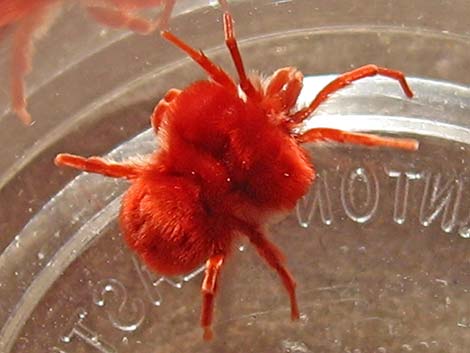 Velvet Mite (Dinothrombium spp.) dorsal view |
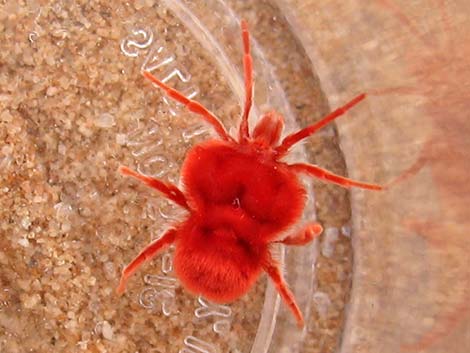 Velvet Mite (Dinothrombium spp.) dorsal view |
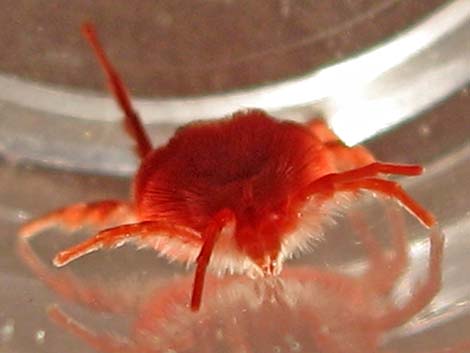 Velvet Mite (Dinothrombium spp.) face view |
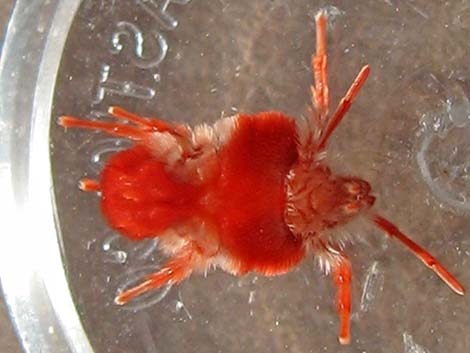 Velvet Mite (Dinothrombium spp.) ventral view |
Note: All distances, elevations, and other facts are approximate.
![]() ; Last updated 240127
; Last updated 240127
| Ticks and Mites | Inverts Around Las Vegas | Glossary | Copyright, Conditions, Disclaimer | Home |